Historic East New York Church May Be Demolished for New Affordable Housing Complex
A 19th-century Romanesque Revival church, Grace Baptist, could be torn down to make way for more than 140 affordable apartments if the church’s plans for a rezoning come to fruition.

Grace Baptist Church exterior this week. Photo by Susan De Vries
A 19th-century Romanesque Revival church in East New York, Grace Baptist Church, will be torn down to make way for a 100 percent affordable housing complex with more than 140 units, if the church’s plans laid out in a rezoning application are greenlit by the city. The complex, which will include space for a new church sanctuary, also involves razing surrounding properties on New Jersey Avenue and Vermont Street.
The circa-1898 church building, which hasn’t been used for services since 2019, is in “poor condition” and the bell tower and roof are in danger of falling, the environmental impact statement included in the rezoning application says. It adds the building “cannot be salvaged” for its original purpose.
Grace Baptist Church Pastor and member of Grace Housing Development Fund Corporation Reverend Lindon McKenzie filed the application to rezone almost an entire block bounded by Liberty Avenue, Vermont Street, Glenmore Avenue, and Pennsylvania Avenue from R5 to R6A, which would allow bigger and taller buildings. The stretch lies just outside of the area upzoned by city in the 2016 East New York Rezoning. The EIS says the area in question “has missed out on the prosperity and renewal brought by that program and stayed underdeveloped in the past decade.”
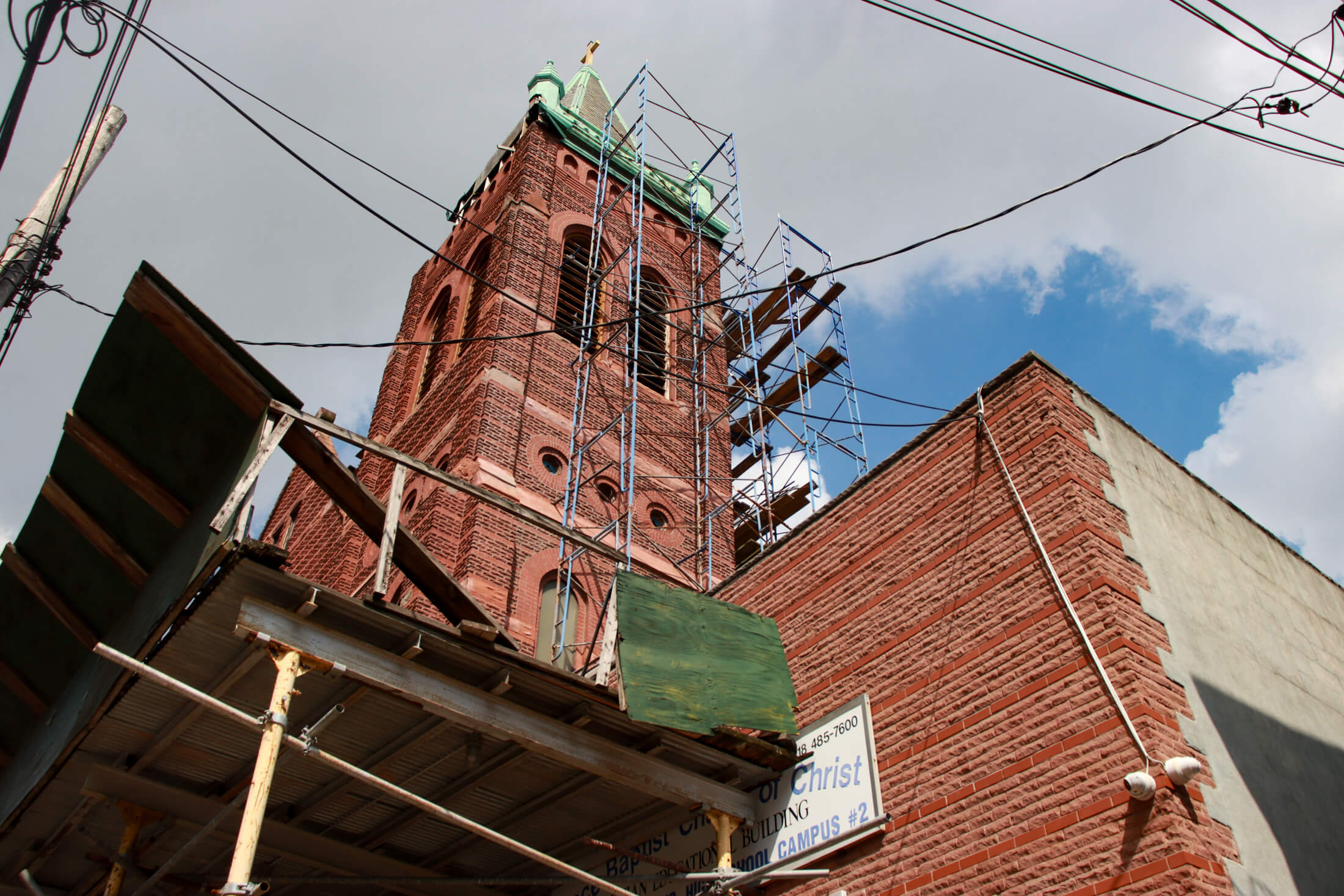
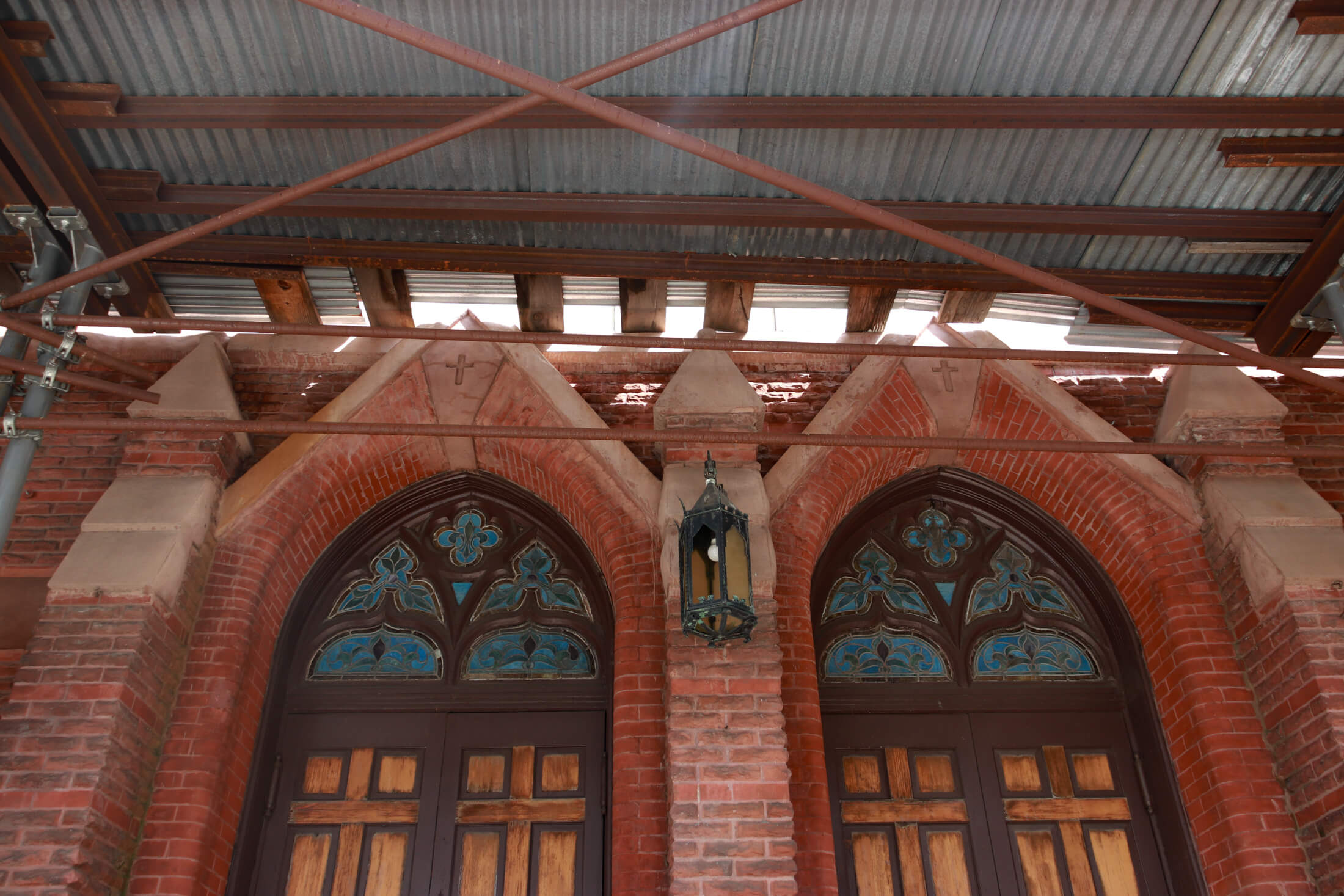
The rezoning application shows plans for a new housing development that includes two buildings, one stretching three lots along New Jersey Avenue and one stretching 10 lots along Vermont Street. The application has conflicting information about the number of units to be included in the development, stating both 142 and 154. Also included in the rezoning area are more than 10 houses, a school building, and a commercial building, none of which are owned by the church.
Grace Baptist Church at 233 New Jersey Avenue, along with an adjoining garage and the rectory, will be razed to make way for a mixed residential and community building on the 14,850-square-foot lot. The rezoning application has conflicting information about whether the building will be five or eight stories tall, and renderings included show a six-story building with a cellar. The church has not applied for any demolition or new building permits to date.
On Vermont Street, city records show the church, via its Grace Housing Development Fund, has been buying a row of properties and empty lots since 2003, with the sections with houses being bought for between $253,500 and $600,000. The last purchase took place in 2016, city records show. Many of the church-owned properties down Vermont Street have been included in the city’s tax lien sale over the past five years, and some still have active liens against them and are headed for foreclosure. The plans state they will be razed to form one 27,443-square-foot lot.
The EIS again has conflicting details on whether the new building will be seven or eight stories. The rendering shows a seven-story building with underground parking.
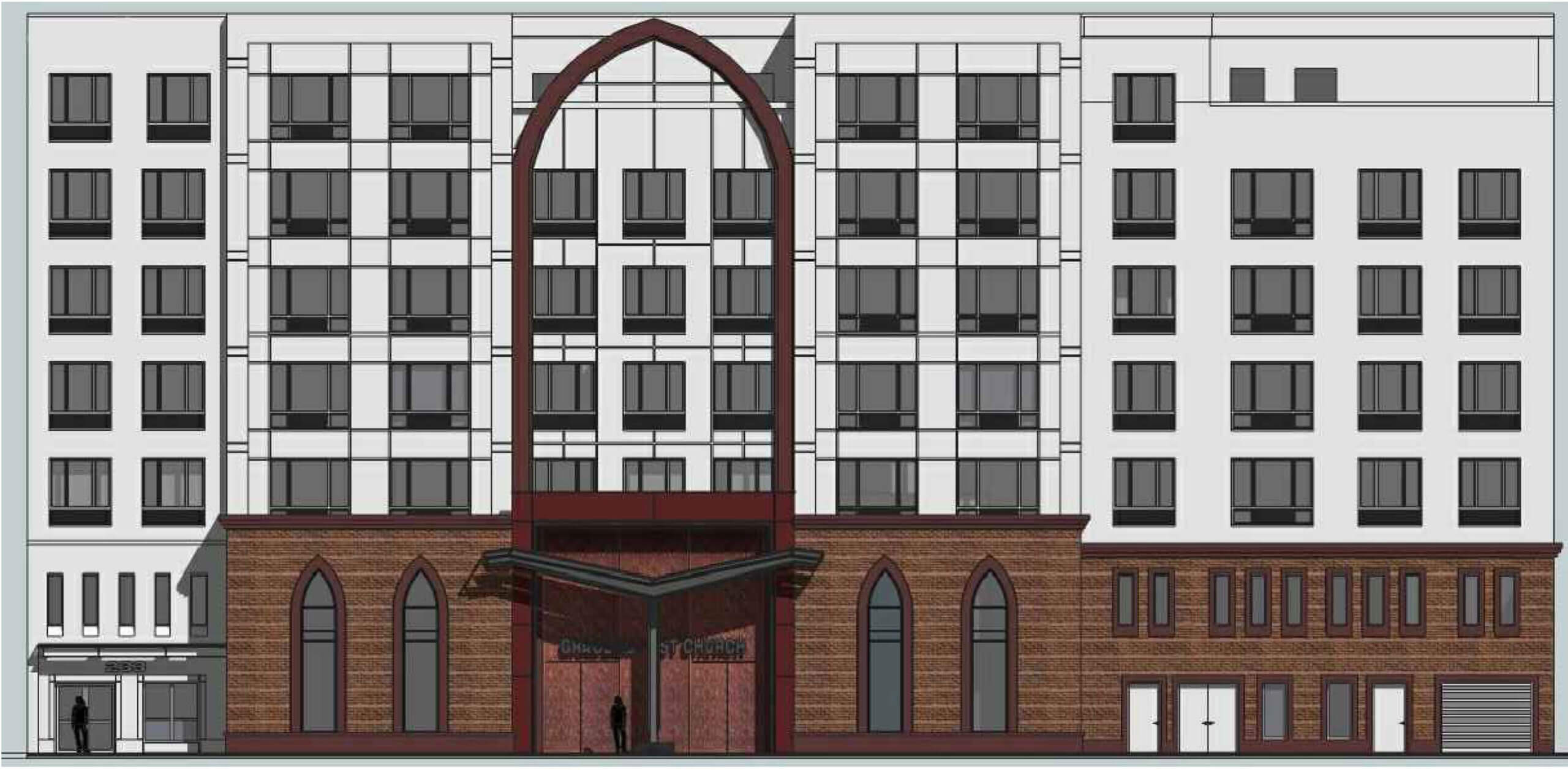

The plans say the development will be 100 percent affordable and permanently affordable, and will use NYC Housing Preservation and Development funding for construction, although they don’t list which specific programs it will be developed under. Brownstoner reached out to HPD and to representatives for Grace Baptist Church but has not yet heard back.
Grace Houses wouldn’t be the church’s first foray into affordable housing development. In the 1970s, under Reverend Jacob Underwood, the house of worship was behind the large affordable housing development Grace Towers at 2060 Pitkin Avenue, city records show. The church sold the 168-unit, two-building Section 8 complex to affordable housing developer Omni for $7.5 million in 2005. In 2021, Omni sold it to Camber Property Group.
According to city records, Grace Baptist Church also owns a number of other properties in East New York, including private Christian school New Grace Center at 650 Livonia, another religious building at 473 Vermont Street, and a garage on Vermont Street. A 1995 court order states the church was allowed to borrow money for the purpose of improving its headquarters and purchasing neighboring properties. The EIS in the rezoning application states the church also owns three houses on New Jersey Avenue that face the church and that could later be developed as a separate residential project.
When Brownstoner visited the church Tuesday, other houses on the block had for-sale signs. Despite the relocation of worship services, posters hung on construction scaffolding surrounding the church advertised a clothing giveaway later this year and the year’s theme of “Repositioned for the Repossession.”
A Google review from 2019 mentions the congregation was worshipping at the New Grace Center school, and a YouTube channel for the church that has 282 followers shows services have been held online for three years (likely due to the pandemic). Outside of the YouTube channel, the church doesn’t appear to have much of an online presence.
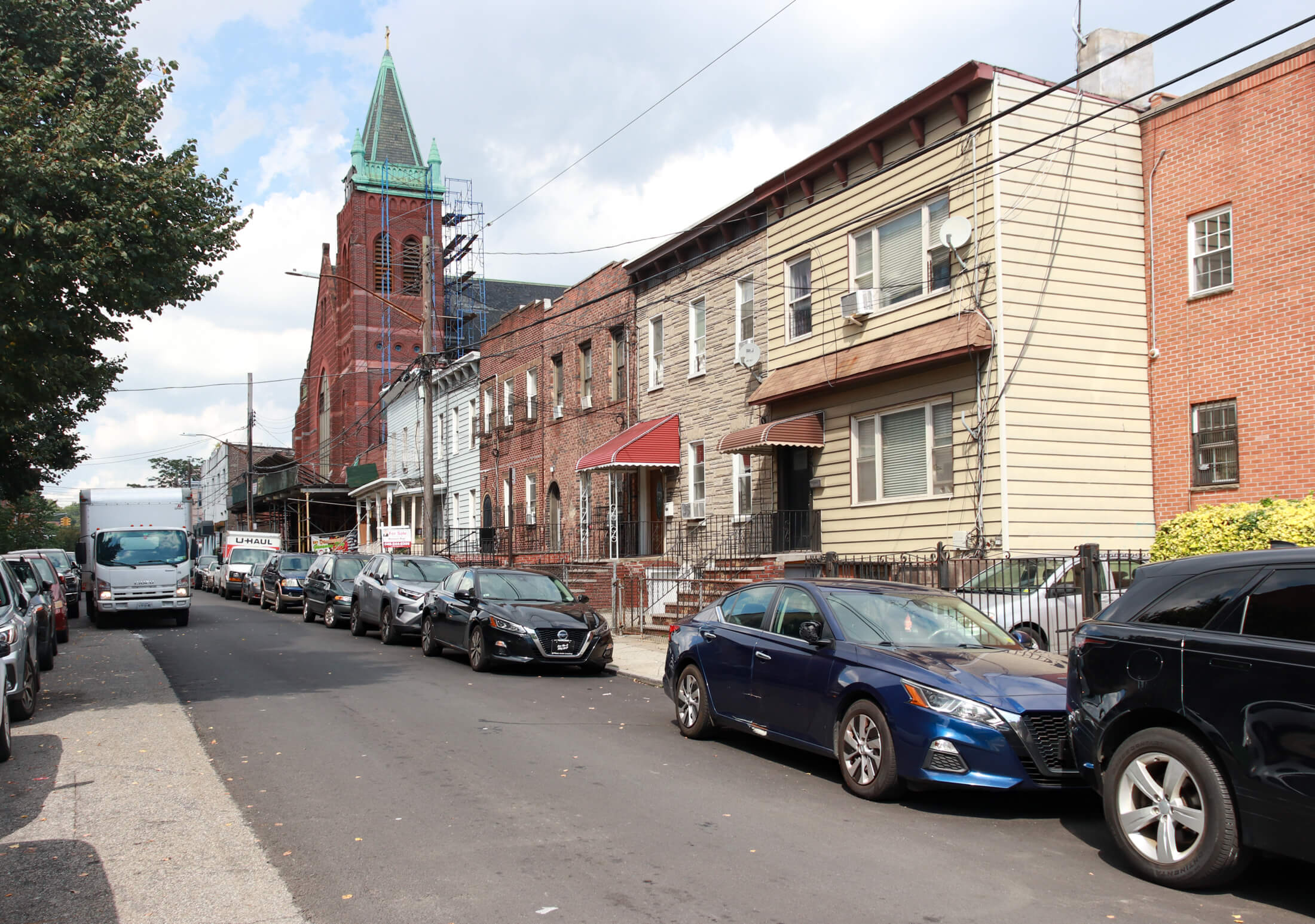
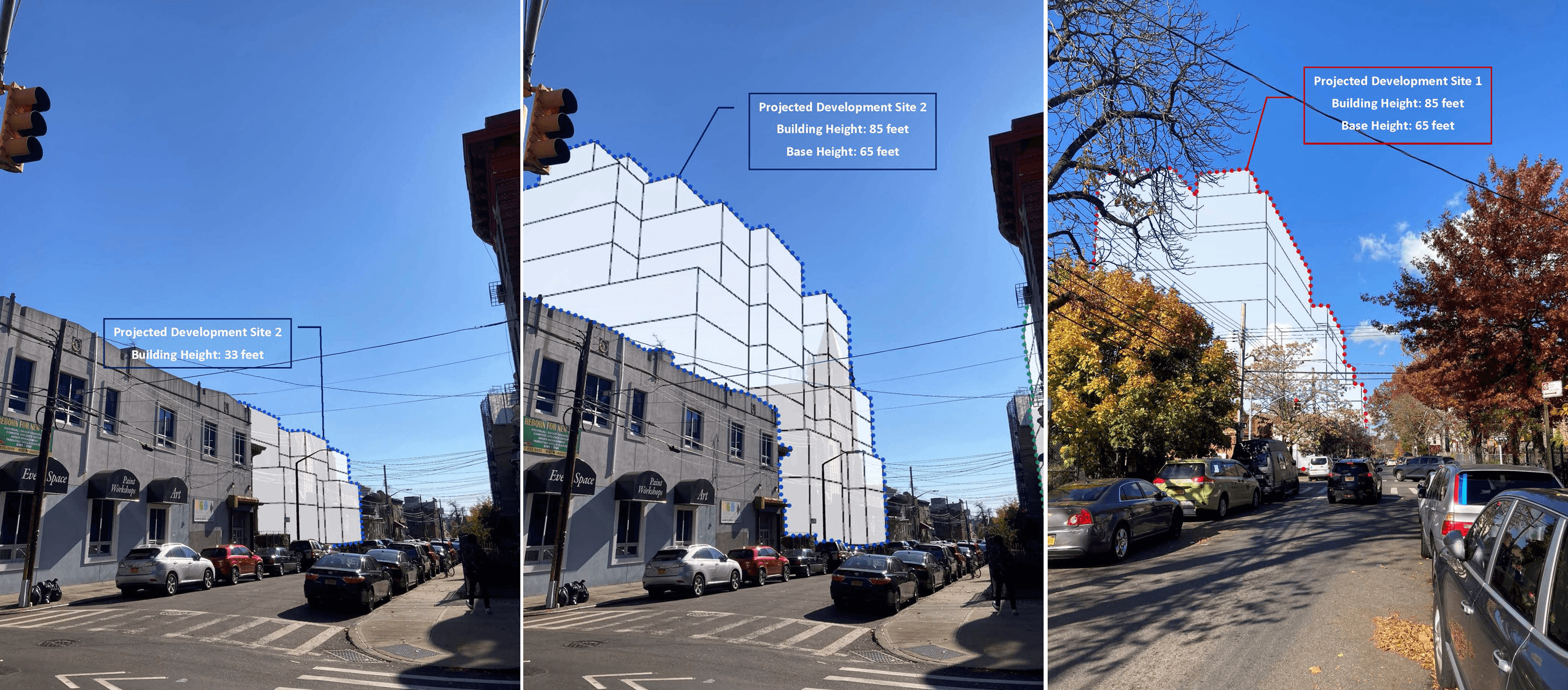
Grace Baptist Church is far from the only religious institution in Brooklyn to develop affordable housing. In the 1980s, East Brooklyn Congregations developed the successful Nehemiah program, building more than 4,000 affordable homes in Ocean Hill and Brownsville. Currently another East New York church is working on an “urban village” in the neighborhood, touting the development of more than 2,000 apartments.
In the last decade or so, churches have also turned to allowing private developers to build for-profit market-rate housing on their land as a way to raise funds as congregations dwindle, property values increase, and building repairs are needed. A recent example of this is the new 17-story development that has risen on the site of St. Mary’s Episcopal in Clinton Hill.
The environmental impact statement for Grace Houses includes renderings of the proposed development that show the Vermont Street development is staggered at differing heights, breaking up the facade down the block, with facades alternating between red and gray brick.
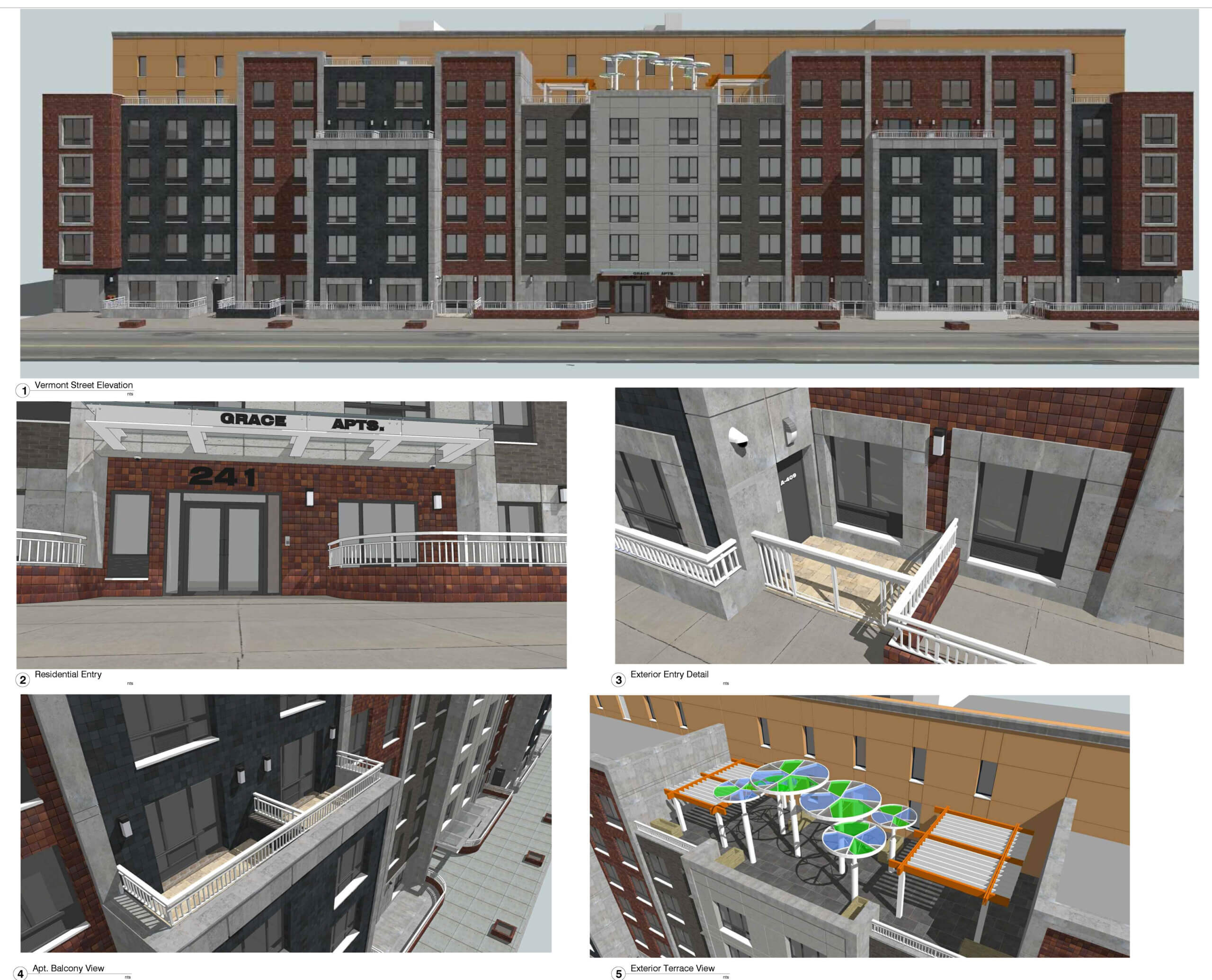
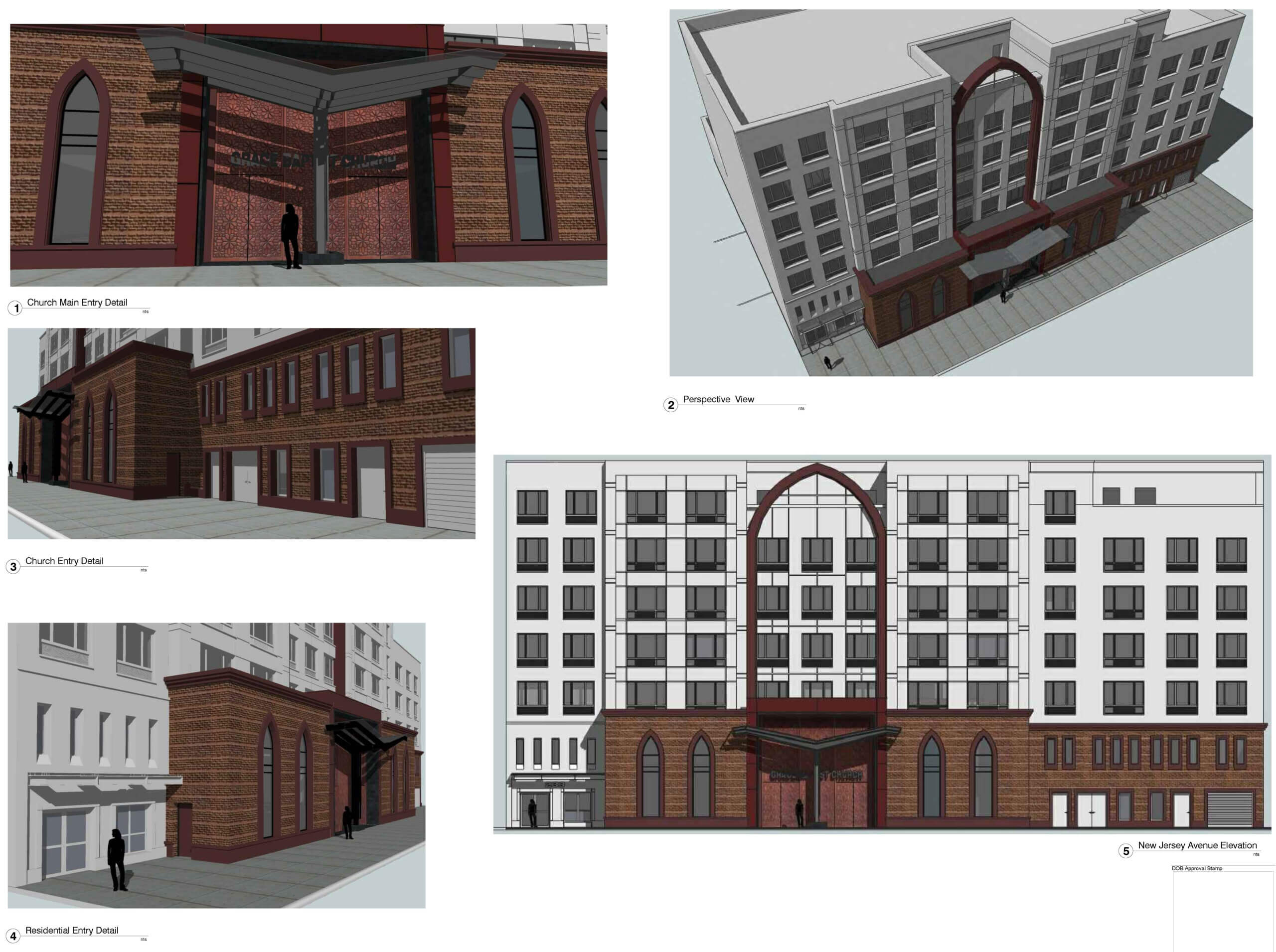
The rendering of the New Jersey Avenue development shows a boxy white building with red brick detailing around the ground floor where the entrance to the church sanctuary will be. Long and narrow arched windows resemble Gothic church windows, and a large red brick arch that stretches over the entrance and spans to the sixth floor nods to part of the facade of the old church building.
The EIS says “the proposed building would be designed to be visually compatible and consistent with existing developments, but would not be replicated so as to create a false historical appearance.”
The current structure was completed in 1898 as St. John’s German Evangelical Lutheran Church (Deutsche Evangelisch Lutherische St. Johannes Kirche) and designed by Archibald McLean, newspaper articles from the time show. The congregation first acquired land on the block in the 1840s and the new Romanesque Revival sanctuary was constructed near the old one. The church rectory is an early 20th century barrel-front brick house. The current church was sold to Grace Baptist Church in 1973, city records show.
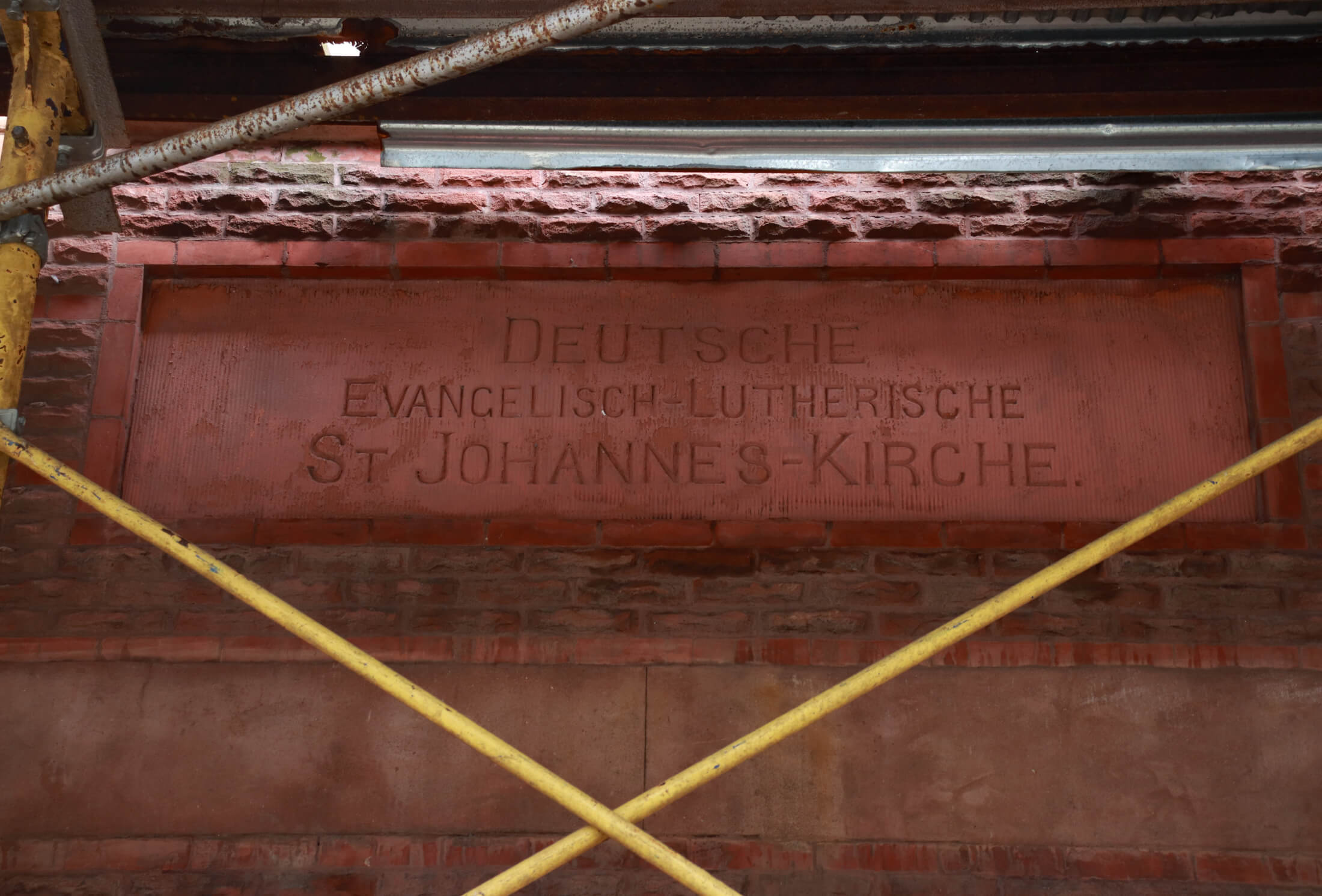
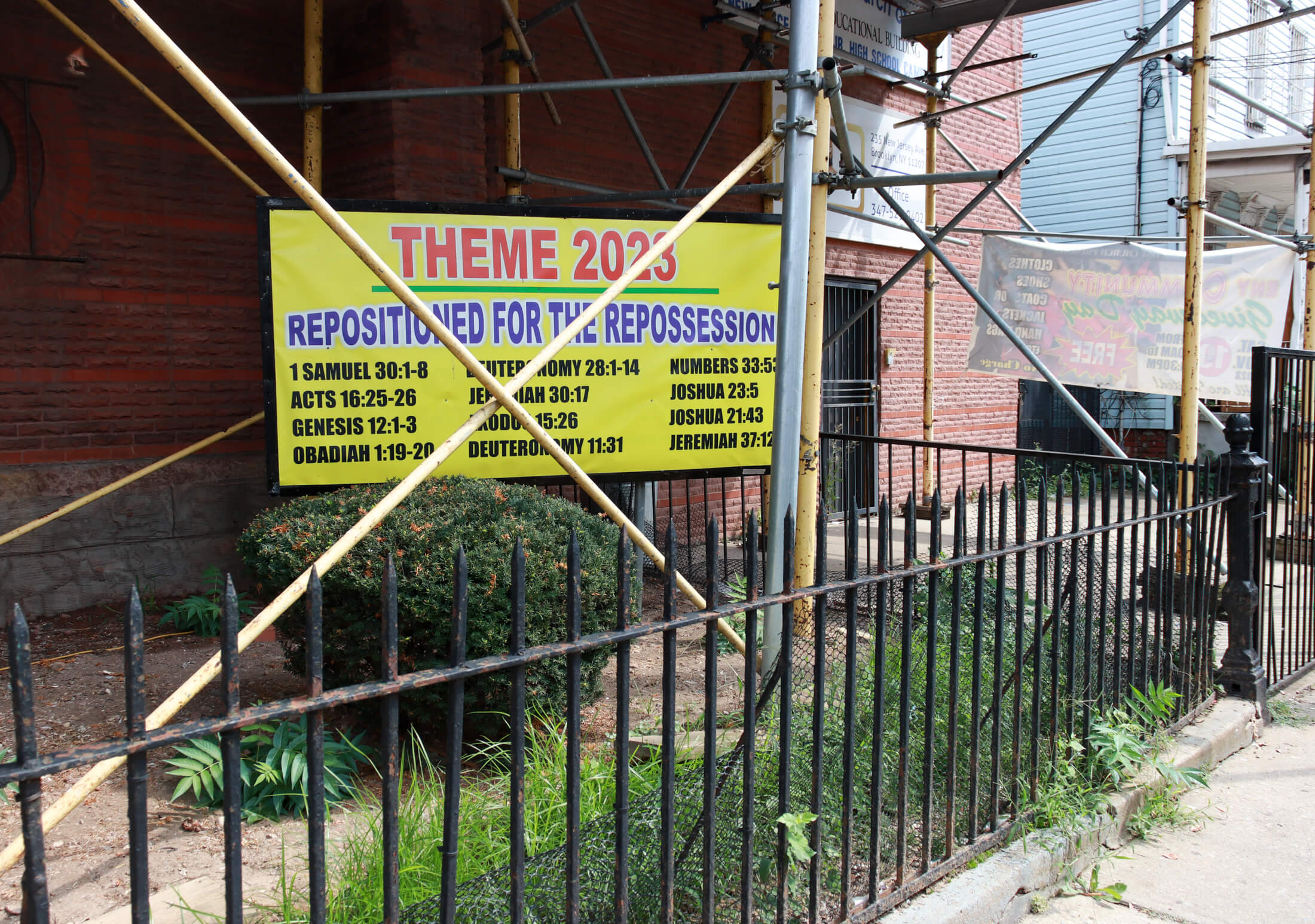
Grace Baptist Church was included in Preserving East New York and Historic District Council’s 2017 list of 18 historic East New York buildings that should be investigated for landmarking, although no further action was taken by the city’s Landmarks Preservation Commission.
The EIS says if the rezoning does not go ahead the church will still be demolished to make way for a 23-unit, four-story residential building that can be developed as of right and would fund the relocation of the congregation to a new home. The building could be 33 feet tall and a total of 27,485 square feet with 15 parking spaces at the cellar level, according to the document.
It also says the remaining church-owned buildings likely wouldn’t be touched without rezoning “because of the inability to develop to a bulk, density, or a number of units that would induce development under the current R5B zoning.” If the rezoning goes through, absent a legal agreement with HPD or others, potentially the church could flip part or all of the property to a private developer.
Once the church has filed all the documents needed for the lengthy Uniform Land Use Review Procedure, members of the public will have the chance to voice their thoughts on the development. The application says the plan is to complete ULURP by December 2023, but that looks unlikely. It says the total build time will be 22 months, following the time it takes to do pre-construction design, bidding, and DOB approvals.
[Photos by Susan De Vries]
Related Stories
- Pre-Civil War Gothic Church Faces Wrecking Ball to Make Way for Apartments in Bed Stuy
- Historic Bed Stuy Factory Building, Now Church, to Be Partially Demo’d for Condos
- Two of East New York’s Historic Structures Threatened by Rezoning, City Report Reveals
Email tips@brownstoner.com with further comments, questions or tips. Follow Brownstoner on Twitter and Instagram, and like us on Facebook.

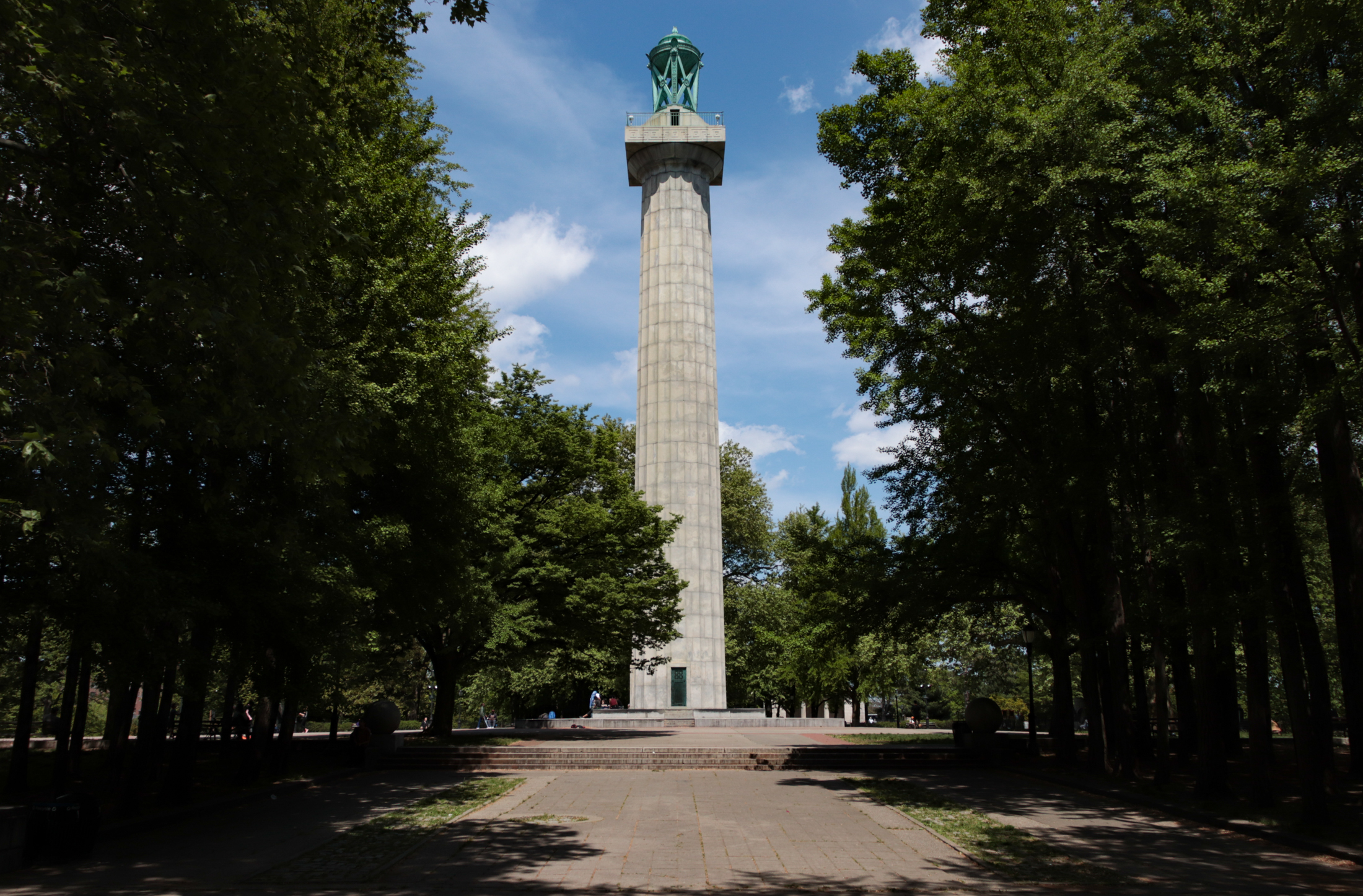
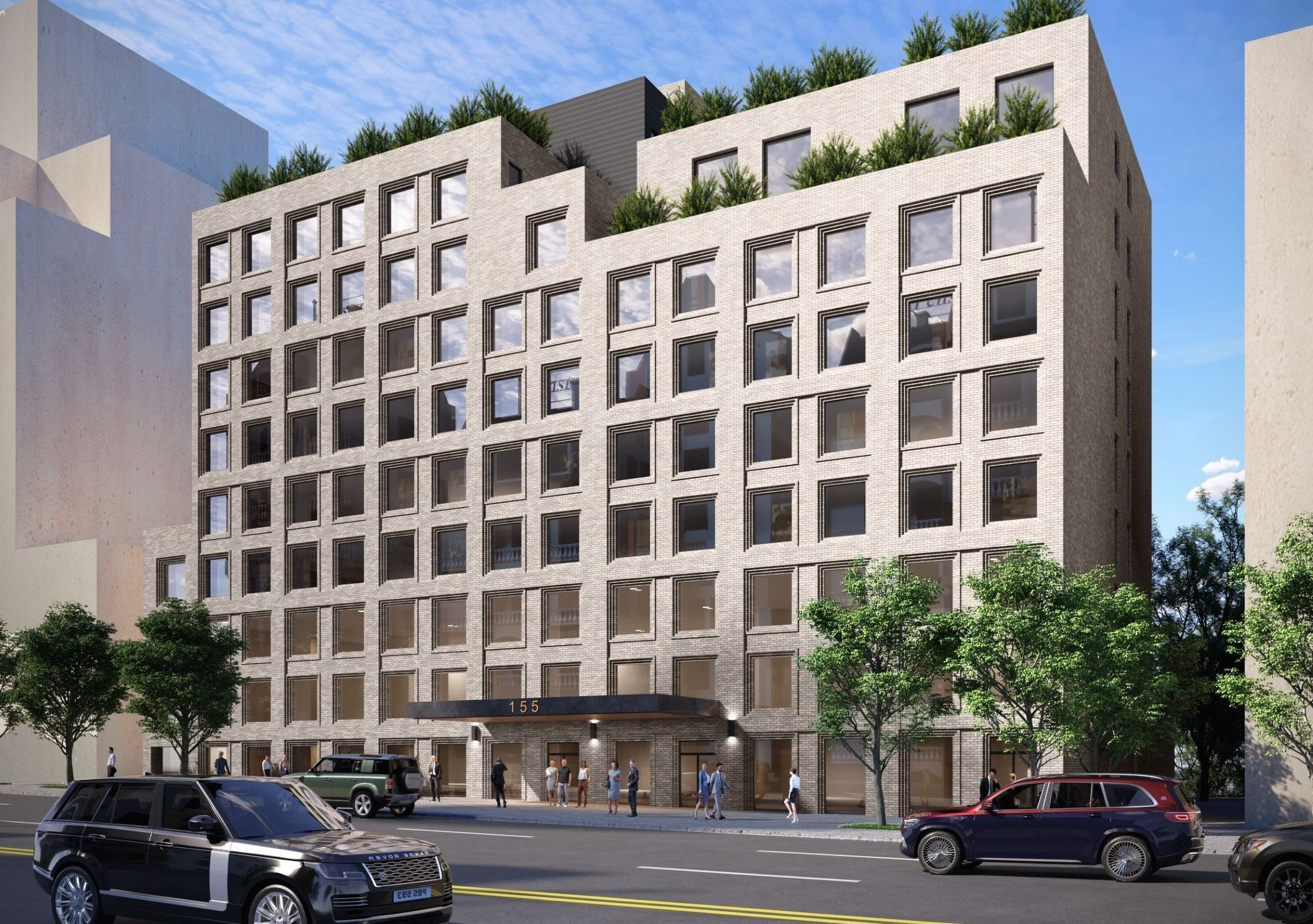
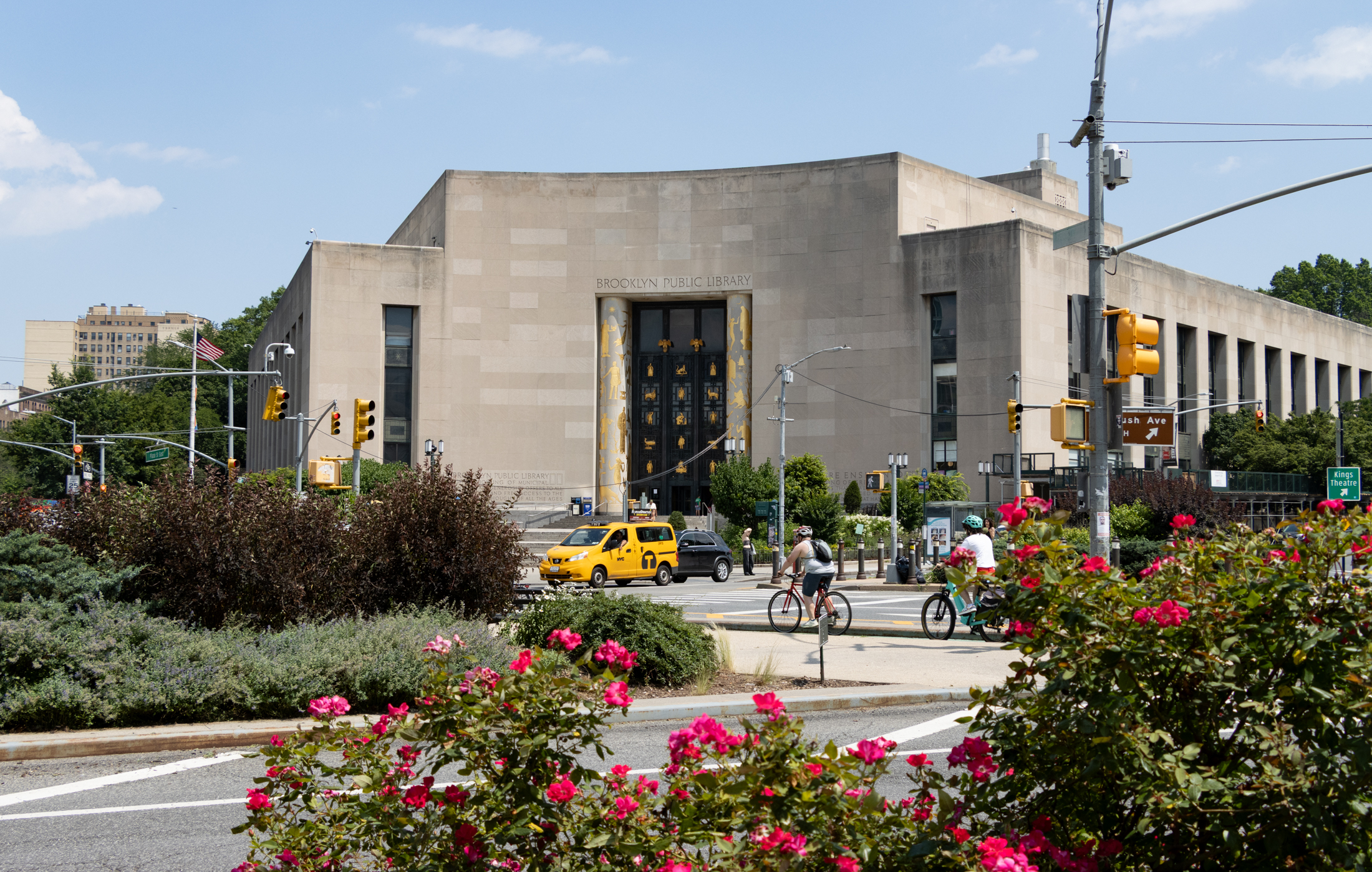
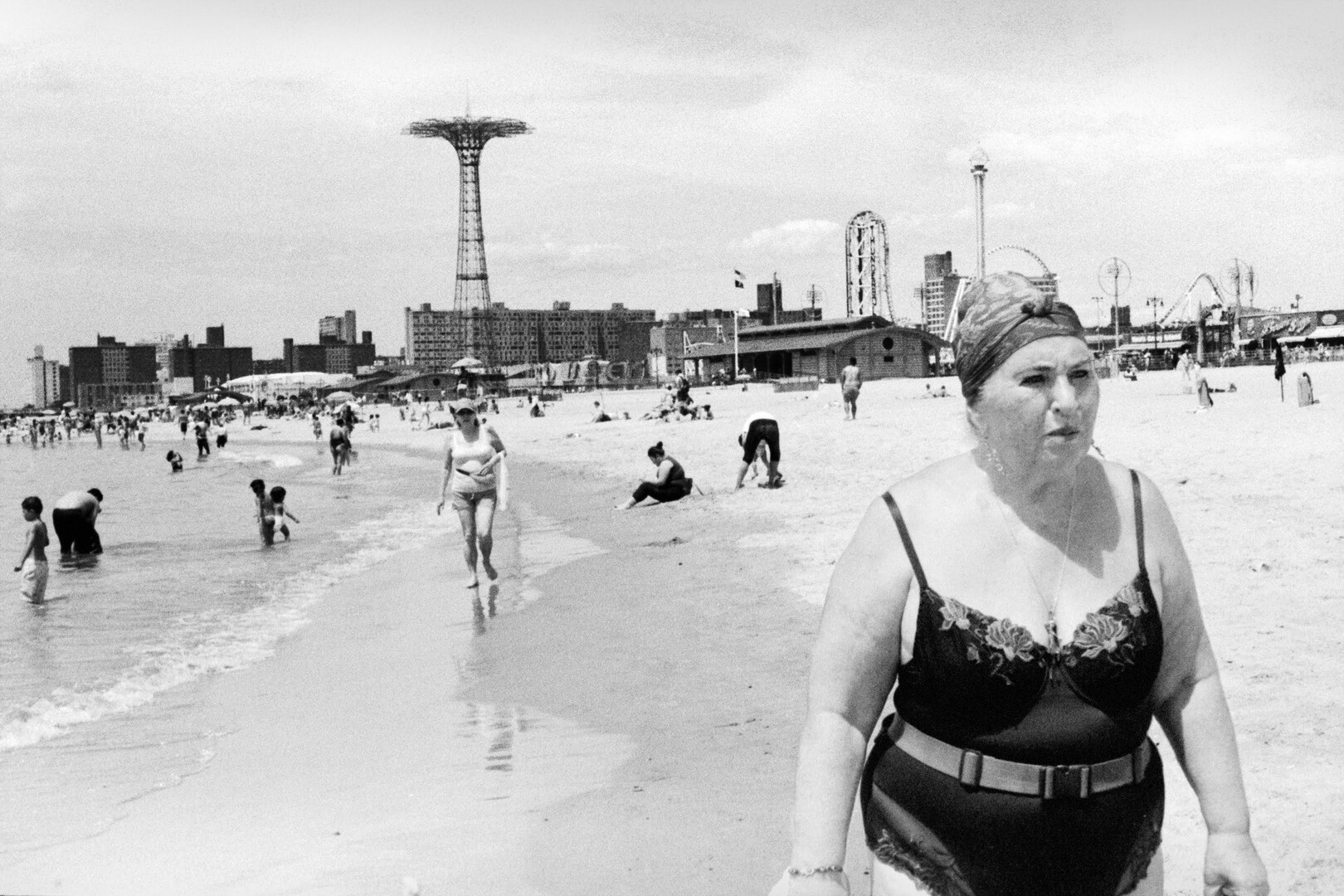
What's Your Take? Leave a Comment